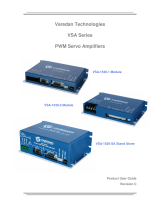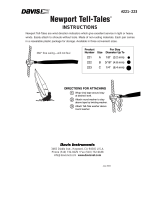
XPS-D Controller Start-Up Manual
11 EDH0395En1032 – 03/19
different PC than the first task yet be simultaneously executed within the XPS.
Alternatively, if the auto-focusing system is providing an analog feedback, this task
could have been implemented as a TCL script within the XPS (see the next topic).
Second, the concept of sockets has another practical advantage for many laboratory
users since the use of threads allows them to share the same controller for different
applications at the same time. With the XPS, it is possible that one group uses one axis
of the XPS controller for an optical delay line, while another group simultaneously uses
other axes for a totally different application. Both applications could run completely
independent from different workstations without any delays or cross-talk.
The XPS controller uses TCP/IP blocking sockets, which means that the commands to
the same socket are “blocked” until the XPS returns feedback about the completion of
the currently executed command (either '0' if the command has been completed
successfully, or an error code in case of an error). If customers want to run several
processes in parallel, users can open as many as 80 parallel sockets.
2.9 Programming with TCL
TCL stands for Tool Command Language and is an open-source string based command
language. With only a few fundamental constructs and relatively little syntax, it is very
easy to learn, yet it can be as powerful and functional as traditional C language. TCL
includes many different math expressions, control structures (if, for, foreach, switch,
etc.), events, lists, arrays, time and date manipulation, subroutines, string manipulation,
file management and much more. TCL is used worldwide with a user base approaching
one million users. It is quickly becoming a standard and critical component in thousands
of corporations. Consequently TCL is field proven, very well documented and has many
tutorials, applications, tools and books publicly available (www.tcl.tk).
XPS users can use TCL to write complete application code and the XPS allows them to
include any function in a TCL script. When developed, the TCL script can be executed
in real time in the background of the motion controller processor and does not impact
any processing requirements for servo updates or communication. The QNX hardware
real-time multiprocessing operating system used on the XPS controller assures precise
management of the multiple processes with the highest reliability. Multiple TCL
programs run in a time-sharing mode with the same priority and will get interrupted
only by the servo, or communication tasks.
The advantage of executing application code within the controller over host run code is
faster execution and better synchronization, in many cases without any time taken from
the communication link. The complete communication link can be reserved for time
critical process interaction from or to the process or host controller.
NOTE
It is important to note that the XPS gives communication requests priority over
TCL script execution. When using TCL scripts for machine security or other time
critical tasks, it is therefore important to limit the frequency of continuous
communication requests from a host computer, which includes the XPS website,
and to verify the execution speed of repetitive TCL scripts.


































